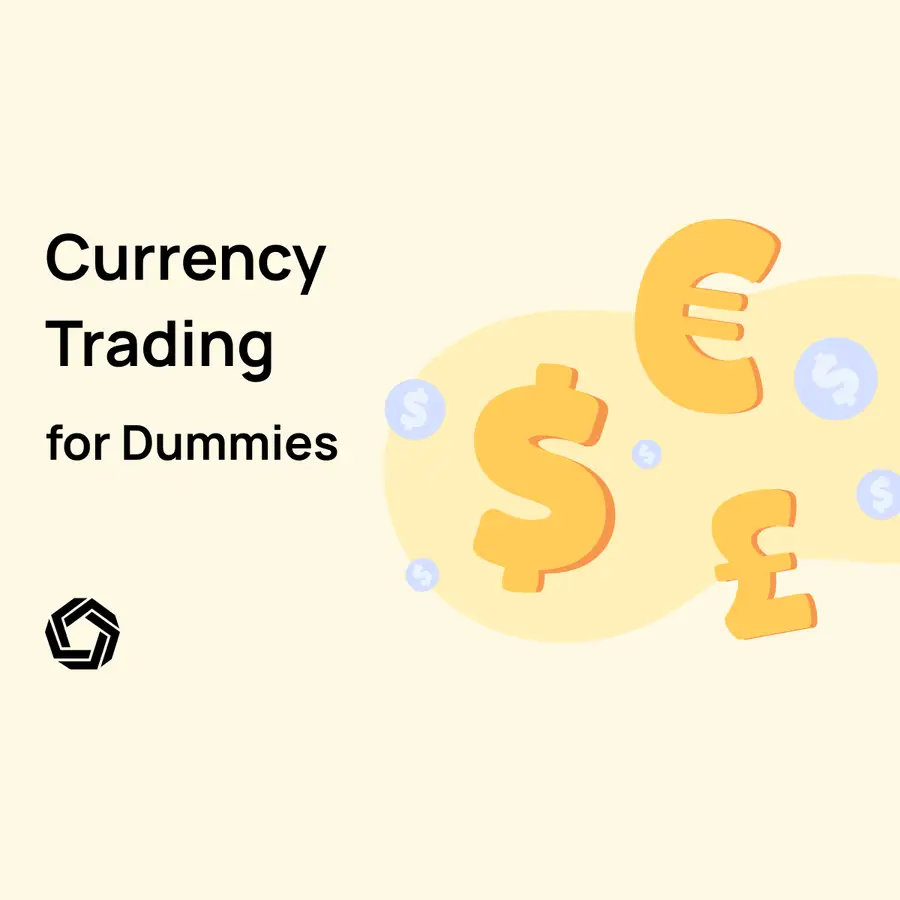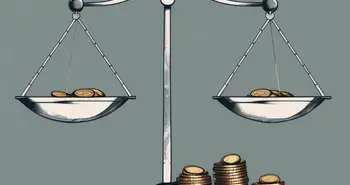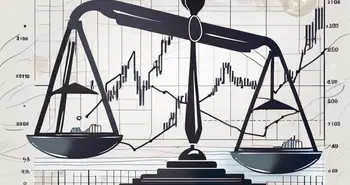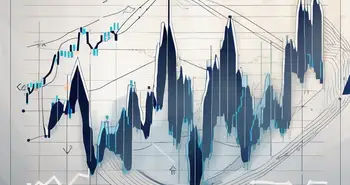Currency Trading for Dummies

Currency trading, also known as foreign exchange trading or forex trading, is a global marketplace where currencies from different countries are bought and sold. Despite its popularity, many people are still intimidated by the idea of trading currencies. That's where this article comes in handy.
This article provides a comprehensive introduction to currency trading, explaining the basics of how the forex market works, common terminology, and strategies for success. Whether you're a novice or a seasoned trader, this article provides essential trading information.
What is Currency Trading?
Currency trading is the act of buying and selling currencies from different countries in order to profit from changes in their exchange rates. With a daily volume of more than $6.6 trillion, the foreign exchange market is the largest financial market in the world, with participants ranging from large financial institutions to individual traders. Currency trading is done electronically, with trades executed through online trading platforms. The forex market is open 24 hours a day, five days a week.
Understanding Currency Trading
Understanding currency trading is important for a number of reasons. For example, it is a crucial aspect of global trade, with businesses and individuals alike needing to exchange currencies to conduct transactions across borders.
Also, currency trading can be a lucrative investment opportunity for those who understand the market and its trends. Indeed, forex trading can result in a better ROI than stock trading.
Finally, fluctuations in currency exchange rates can have a significant impact on the economy of a country. Therefore, it is important for policymakers and economists to understand the mechanisms of currency trading in order to make informed decisions.
The Basics of Currency Trading
Currency trading involves the buying and selling of currencies from different countries with the aim of making a profit from fluctuations in exchange rates. The forex market is the largest financial market in the world, with trades conducted electronically through online trading platforms like Morpher.com.
Currency trading is done in pairs, with one currency being bought and another currency being sold. The exchange rate between the two currencies reflects their relative values, with changes in exchange rates driven by a range of economic and geopolitical factors.
Currency traders use a range of techniques to try and predict changes in exchange rates. These techniques include technical analysis, fundamental analysis, and sentiment analysis. Successful currency traders can make substantial profits. But bear in mind, it is a high-risk activity, and traders need to have a deep understanding of the market and its risks before engaging in currency trading.
Understanding What Drives the Forex Market
Several factors can drive the forex market.
For example, economic indicators such as GDP, employment rates, and inflation figures can all impact a country's currency value. By and large, stronger economic performance generally results in a stronger currency.
Political events such as elections, government policy changes, and geopolitical tensions can also affect the forex market, as uncertainty or instability can lead to currency fluctuations.
Finally, market sentiment, or the overall mood of traders and investors, can also impact currency values, with fear or optimism driving demand for different currencies.
Understanding what drives the forex market requires keeping up to date with economic and political news, as well as monitoring market sentiment and technical indicators. It also requires a deep understanding of the factors that influence currency values and the risks involved in trading currencies.
Creating a Foreign Currency Trading Strategy
Formulating a foreign currency trading strategy involves a strategic mix of technical and fundamental analysis, risk management, and discipline. A trading strategy should include clear entry and exit points, with stop loss and take profit levels set to manage risk and protect profits.
Traders should also consider factors such as leverage and position sizing, ensuring that they only risk a small percentage of their trading account on each trade. Fundamental analysis should include keeping up to date with economic and political news that could impact currency values, while technical analysis can be used to identify trends and potential entry and exit points.
Finally, discipline is crucial in sticking to a trading plan, avoiding emotional decision making, and monitoring and adjusting the strategy as needed.
Identifying Goals and Risk Tolerance
Identifying goals and risk tolerance is crucial for successful currency trading. Goals can help traders define what they want to achieve, whether it is short-term gains or long-term growth, and can guide their trading decisions.
Risk tolerance is the amount of risk that a trader is willing and able to take on, which can determine the size of positions, the use of leverage, and the types of trades undertaken. Understanding risk tolerance can help traders avoid overtrading, taking on too much risk, or making emotional decisions that can lead to losses.
Successful currency traders have a clear understanding of their goals and risk tolerance and use this knowledge to develop a trading plan that is tailored to their needs, with risk management strategies in place to protect their trading accounts.
Choosing a Trading Style
Choosing a trading style is important for a currency trader as it determines the frequency and duration of their trades, the types of analysis used, and the level of risk taken on. Different trading styles, such as day trading, swing trading, and position trading, require different approaches and strategies, and suit traders with different levels of experience, risk tolerance, and availability.
Day trading or intraday trading involves taking multiple trades within a single day, requiring quick decision-making and a high level of attention. Position trading, on the other hand, involves taking longer-term trades based on fundamental analysis, with trades lasting weeks or months.
Swing trading sits between the two, with trades lasting a few days to a week. Choosing a trading style that aligns with a trader's personality, goals, and availability can increase the chances of success in currency trading and help manage risk. It also enables traders to develop and refine their trading strategies, becoming experts in their chosen style.
Conducting Fundamental and Technical Analysis
Conducting both fundamental and technical analysis is important to currency traders as it provides them with a deeper understanding of the factors driving currency prices and enables them to identify potential trading opportunities.
Fundamental analysis involves analyzing economic, financial, and political data to assess a currency's underlying value and potential for growth or decline. Technical analysis, on the other hand, involves using charts, indicators, and price action to identify patterns, trends, and potential entry and exit points.
Candlestick patterns, a popular technical analysis tool, provide valuable insights into market sentiment and trend reversals, and can be used to identify potential trading opportunities. Successful currency traders use a range of analytical tools, including candlestick patterns, to help them make informed trading decisions and manage risk.
By combining both fundamental and technical analysis, traders can get a more comprehensive view of the market and make informed trading decisions.
Risk Management
Importance of Managing Risk
Managing risk is crucial in forex trading because it helps traders protect their trading accounts and avoid significant losses. The forex market is highly volatile, and sudden price movements can result in significant losses if traders do not have adequate risk management strategies in place.
Managing risk involves setting stop loss orders to limit potential losses, using position sizing to ensure that no single trade exceeds a predetermined percentage of the trading account, and avoiding overtrading or taking on too much risk. Traders who prioritize risk management are better able to weather market fluctuations, remain disciplined in their trading decisions, and ultimately increase their chances of success in forex trading.
Risk Management Techniques
Risk management techniques such as stop-loss orders and position sizing are essential for managing risk in forex trading. A stop-loss order is an instruction to exit a trade at a specific price to limit potential losses. Traders can set a stop-loss order when entering a trade, ensuring that the maximum loss is limited to a predetermined amount.
Position sizing involves determining the size of each trade based on the amount of risk a trader is willing to take on, typically as a percentage of the trading account. This technique ensures that no single trade exceeds a predetermined percentage of the trading account, reducing the impact of any individual trade on the account balance.
Successful traders use a combination of risk management techniques to manage their exposure to the market and protect their trading accounts, helping them to remain disciplined and focused on achieving their trading goals.
A well-designed trading strategy can increase the chances of success, but traders should be prepared for losses and have a long-term outlook to weather fluctuations in the forex market.
Common Mistakes and Pitfalls
Currency traders face a range of common mistakes and pitfalls that can lead to losses and reduced trading performance. One of the most common mistakes is overtrading, which can lead to impulsive decisions, taking on too much risk, and ignoring risk management strategies.
Another mistake is failing to have a trading plan or not following it, leading to emotional trading decisions and reduced discipline. Traders may also fall victim to confirmation bias, only seeking information that supports their existing beliefs and ignoring information that contradicts it.
Lastly, traders may become too focused on short-term results and ignore the bigger picture, leading to excessive risk-taking and reduced performance in the long term.
To avoid these common mistakes, traders should prioritize risk management, develop a clear trading plan, remain disciplined and focused on their goals, and maintain a positive mindset. By avoiding these pitfalls, traders can increase their chances of success in currency trading and achieve their trading objectives.
Getting Started with Currency Trading
Morpher.com offers a platform that allows users to trade a variety of assets, including foreign currencies, using its unique token-based trading system. Setting up a trading account with Morpher.com is a simple process that can be completed in just a few steps.
To open your trading account and make your first currency trade on Morpher, follow the steps below.
First, visit the Morpher.com website and click on the “Get Started” button located in the top right corner of the page.

Morpher Homepage (source: Morpher.com)
On the sign-up page, enter your email address and password. Click on the “Continue” button. If you encounter any issues with account creation, reach out to Morpher customer support as they are quick to respond.
Once you've entered your email address and password, Morpher.com will send you a verification email.
After verifying your email address, you'll be taken to a registration form. Fill out the form with your personal information, including your name, date of birth, and country of residence. You'll also be asked to provide a government-issued ID, such as a passport or driver's license, to verify your identity.
To start trading, you'll need to deposit funds into your Morpher.com account. Morpher.com accepts deposits in a variety of cryptocurrencies, including Bitcoin, Ethereum, and USDC. Choose the cash or cryptocurrency you want to use to fund your account and follow the instructions to complete the deposit.
Once you've deposited funds into your account, you're ready to start trading. Morpher.com offers a variety of trading pairs, including currency pairs, so you can choose the assets you want to trade.
To place a trade, simply select the asset you want to trade, choose the direction you think the price will go, and enter the amount you want to trade. Morpher.com will automatically create a token representing your position, which you can sell back for a profit if the price moves in your favor.
Conclusion
Successful forex traders understand market trends, technical analysis, risk management, and disciplined trading strategies. They must stay informed about global economic and political events that can affect currency values, and use this information to make informed trading decisions. The Morpher platform provides currency traders with insightful information allowing currency traders to flourish irrespective of whether they are novice or experienced forex traders.

Disclaimer: All investments involve risk, and the past performance of a security, industry, sector, market, financial product, trading strategy, or individual’s trading does not guarantee future results or returns. Investors are fully responsible for any investment decisions they make. Such decisions should be based solely on an evaluation of their financial circumstances, investment objectives, risk tolerance, and liquidity needs. This post does not constitute investment advice.

Painless trading for everyone
Hundreds of markets all in one place - Apple, Bitcoin, Gold, Watches, NFTs, Sneakers and so much more.

Painless trading for everyone
Hundreds of markets all in one place - Apple, Bitcoin, Gold, Watches, NFTs, Sneakers and so much more.









